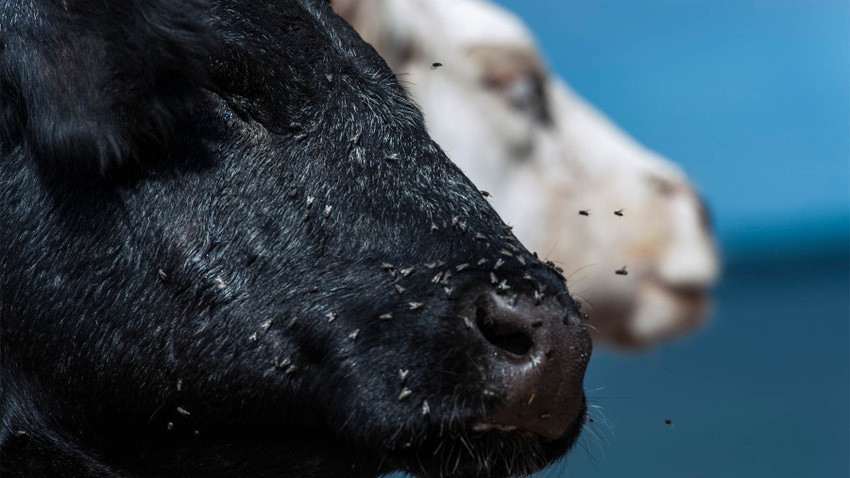July 18, 2023

By Grant Dewell, Iowa State University
July is a good time to evaluate how your fly control program is working. When horn fly numbers are greater than 200 flies per animal we see significant production losses associated with blood loss and decreased feed consumption. Numbers of face flies and stable flies are harder to assess because they only spend a small amount of time feeding on cattle but are still significant pests. Face flies can damage the surface of the eye and transmit bacteria leading to pinkeye problems. Biting flies that move from animal to animal such as stable flies can transmit diseases such anaplasmosis.
Any pour-ons that were used at grass turn out are no longer effective and re-application could be beneficial. Fly tags should still be providing some protection but are probably about halfway through their protection window. If used, feed through larvicide products should be continued, but it is probably too late to start as a large number of larvae will have already been developing.
If cattle are being bothered by flies now, an insecticide pour-on or back-rubber would be most practical at this time. Back-rubbers are fairly easy to set up but will need to be recharged regularly to get the cows through the rest of the summer. Pour-ons will only be effective for a few weeks but can be useful to rapidly knock down a population of flies. When pouring cattle this time of year it is a good opportunity to assess cows overall: is the bull still healthy and active, any disease issues such as foot rot or pinkeye in calves, are cows getting bred or are there still quite a few still cycling? This also is a good time to start calves preconditioning vaccines as long as they are at least 4 months of age.
Besides causing production losses, flies also can be vectors for diseases such as anaplasmosis or pinkeye which increases the importance of good fly control programs. Additionally, when cattle bunch up because of fly irritation they can damage pastures or facilities due to the heavy concentration of cattle. Injuries to feet or eyes also can occur when cattle bunch up.
You May Also Like




